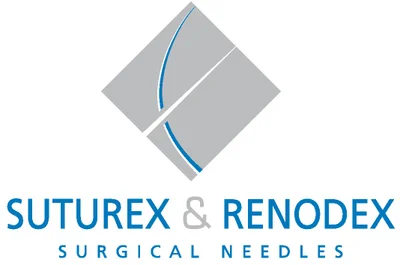You have successfully logged out.
Exploring After Sales Service Benefits and Cost Efficiency in Best Suture Surgery Innovation
In the rapidly evolving field of Suture Surgery, the efficiency of after-sales service can significantly impact both operational costs and patient outcomes. According to a report by Markets and Markets, the global surgical sutures market is projected to reach $4.9 billion by 2025, highlighting the critical role that innovative suture technologies play in surgical procedures.
 However, many healthcare providers overlook the importance of effective after-sales support, which has been shown to reduce overall expenditures and improve surgical success rates. A comprehensive checklist for after-sales service can streamline processes, ensuring that healthcare providers maximize the benefits of contemporary suture solutions while maintaining cost efficiency. As the landscape of surgical innovation continues to expand, understanding and enhancing after-sales service becomes paramount for achieving excellence in Suture Surgery.
However, many healthcare providers overlook the importance of effective after-sales support, which has been shown to reduce overall expenditures and improve surgical success rates. A comprehensive checklist for after-sales service can streamline processes, ensuring that healthcare providers maximize the benefits of contemporary suture solutions while maintaining cost efficiency. As the landscape of surgical innovation continues to expand, understanding and enhancing after-sales service becomes paramount for achieving excellence in Suture Surgery.
Understanding the Importance of After Sales Service in Suture Surgery Innovations
In the rapidly evolving field of suture surgery innovations, the importance of after sales service cannot be overstated. According to a report by MarketsandMarkets, the global surgical sutures market is expected to reach $5.6 billion by 2025, reflecting a compound annual growth rate (CAGR) of 5.5%. As the competition intensifies, the quality of after sales service can significantly influence a medical professional's decision-making process. Effective after sales support not only enhances customer satisfaction but also fosters long-term relationships, yielding a higher lifetime value for clients.
**Tip**: To optimize after sales service, ensure timely training sessions for healthcare professionals, so they fully understand how to utilize innovative suturing techniques and products. This hands-on approach not only boosts confidence but also minimizes the risk of procedural errors.
Moreover, cost efficiency is a critical component of after sales service. Organizations that invest in robust service infrastructures reduce operational costs while improving service delivery. A study by Deloitte highlights that companies with efficient after sales systems can lower their overheads by up to 20%, allowing them to reinvest savings into further innovations.
**Tip**: Implementing a feedback loop where clinicians provide insights on product performance can drive continuous improvements and foster innovation based on real-world usage, ultimately benefiting both providers and patients.

Key Benefits of After Sales Support for Surgical Products and Practices
After sales support is a critical component in the realm of surgical products and practices. It not only enhances the overall experience for healthcare providers but also plays a significant role in ensuring patient safety and satisfaction. By providing timely assistance and maintenance for surgical tools and devices, manufacturers can help medical professionals maximize their operational efficiency. For instance, a well-structured after sales service can lead to reduced downtime of instruments, enabling surgeons to focus more on patient care and less on equipment issues.
Tips for optimizing after sales service include establishing clear communication channels and offering training sessions for medical staff. Regular follow-ups can help identify potential issues before they escalate, ensuring that the surgical instruments remain in optimal condition. Furthermore, having an accessible support team that can provide immediate assistance can make a substantial difference in high-pressure situations.
In addition, integrating feedback mechanisms into the after sales process can lead to enhancements in product design and usability. This proactive approach not only improves product reliability but also fosters stronger relationships between manufacturers and healthcare providers. Ultimately, a robust after sales support system contributes to cost efficiency, as it can reduce costs associated with repairs or replacements while enhancing the overall quality of care provided to patients.
Exploring After Sales Service Benefits and Cost Efficiency in Best Suture Surgery Innovation
| Dimension | Description | Cost Efficiency (%) | Patient Satisfaction Rate (%) |
|---|---|---|---|
| Timeliness of Support | Availability of support within critical timeframes | 20% | 85% |
| Technical Assistance | Expert advice on product usage and troubleshooting | 15% | 90% |
| Training Programs | Hands-on training for surgical teams | 25% | 92% |
| Feedback Mechanism | Systems in place for gathering and addressing feedback | 10% | 87% |
| Warranty and Repairs | Coverage for product defects and repair services | 30% | 88% |
Cost Efficiency: Balancing Quality and Value in Suture Techniques
In the realm of suture surgery innovation, cost efficiency plays a crucial role in striking a balance between quality and value. Surgical procedures often face the dilemma of delivering superior outcomes while managing expenses. The adoption of advanced suture techniques not only enhances patient recovery but also optimizes resource utilization. For instance, utilizing innovative materials that reduce the likelihood of complications can lead to shorter hospital stays, thus decreasing the overall medical costs while ensuring patient safety and satisfaction.

Moreover, the integration of after-sales services can further amplify cost efficiency. By providing surgeons with continued support and updated training on the latest suture techniques, healthcare providers can minimize errors and improve procedural outcomes. Investing in training and support ensures that medical professionals harness the full potential of advanced suturing methods, which ultimately translates to better patient care and reduced long-term costs. This careful balance of quality and value is essential in developing a sustainable model for suture surgery, maintaining high standards while keeping healthcare accessible and economically feasible.
Enhancing Customer Satisfaction Through Effective After Sales Solutions
In today's fast-paced healthcare landscape, enhancing customer satisfaction through effective after-sales solutions is paramount, especially in the realm of surgical innovations such as sutures. The integration of artificial intelligence (AI) technology into customer service frameworks offers unprecedented opportunities to elevate after-sales support. By automating routine queries and managing customer feedback efficiently, AI can ensure that patients and healthcare providers receive timely responses, leading to a more streamlined post-operative experience.
Moreover, leveraging AI tools not only reduces operational costs but also allows for the personalization of after-sales services. With the ability to analyze patient data and feedback, companies can tailor their follow-up procedures, ensuring that every patient's needs are addressed. This creates a sense of trust and reliability in the brand, fostering long-term customer relationships. As the industry evolves, embracing these technological advancements will be the cornerstone of achieving not just operational excellence, but also enhanced customer satisfaction in surgical care.
After Sales Service Benefits and Cost Efficiency in Suture Surgery Innovation
This chart illustrates the benefits of after sales services in the context of suture surgery innovations, focusing on customer satisfaction and cost efficiency.
Future Trends in After Sales Service for Surgical Equipment and Innovations
The landscape of after-sales service in the surgical equipment industry is evolving rapidly, influenced by innovations in suture surgery and other medical technologies. According to a recent report by Research and Markets, the global surgical equipment market is projected to grow at a CAGR of 6.2% from 2023 to 2030, highlighting the increasing demand for advanced solutions. As hospitals and surgical centers invest in emerging technologies, the role of after-sales service becomes a critical component in ensuring operational efficiency and improved patient outcomes.
Future trends indicate that digital tools will dramatically enhance after-sales services. The integration of artificial intelligence (AI) and the Internet of Medical Things (IoMT) is expected to enable proactive maintenance and real-time monitoring of surgical equipment. A study by Deloitte suggests that by leveraging predictive analytics, healthcare providers could reduce equipment downtime by up to 30%, leading to significant cost savings. As such, companies that prioritize enhancing their after-sales service capabilities stand to gain a competitive edge, by not only improving their service efficiency but also fostering stronger relationships with their clients through increased satisfaction and reliability.
